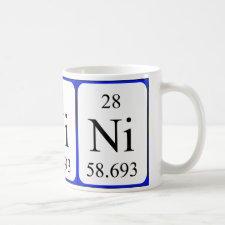
Authors: Otero-Romaní J, Moreda-Pińeiro A, Bermejo-Barrera P, Martin-Esteban A
Article Title: Synthesis, characterization and evaluation of ionic-imprinted polymers for solid-phase extraction of nickel from seawater.
Publication date: 2008
Journal: Analytica Chimica Acta
Volume: 630
Issue: (1)
Page numbers: 1-9.
DOI: 10.1016/j.aca.2008.09.049
Alternative URL: http://www.sciencedirect.com/science/article/B6TF4-4TK47DR-3/2/2c76143b0aa12cc427437afa11bf8eb9
Abstract: Several nickel ion imprinted polymers were prepared via precipitation polymerization using 4-vinylpyridine or 2-(diethylamino) ethyl methacrylate as monomers (vinylated reagents) and a cross-linking agent divinylbenzene in the presence of nickel(II) alone or nickel(II) and 8-hydroxyquinoline (non-vinylated reagent). For all cases, 2,2'-azobisisobutyronitrile (AIBN) was used as an initiator and an acetonitrile/toluene (3:1) mixture was chosen as a porogen. After packing the polymer particles into empty SPE cartridges, nickel(II) ions were removed by washing with 50ámL of 2.0áM nitric acid. Characterization of the polymer particles has been carried out by scanning electron microscopy, energy dispersive X-ray fluorescence and elemental analysis. The best nickel imprinting properties were given by polymers synthesized in the presence of 8-hydroxyquinoline and 2-(diethylamino) ethyl methacrylate as a monomer. The optimum pH for quantitative nickel retention was 8.5á¦á0.5, while elution was completed with 2.5ámL of 2.0áM nitric acid. When using polymer masses of 300ámg, sample volumes until 250ámL can be passed through the cartridges without reaching the breakthrough volume. Therefore, a pre-concentration factor of 100 has been reached when eluting with 2.5ámL of the elution solution. Electrothermal atomic absorption spectrometry has been used as a detector for nickel determination. The limit of detection of the method was 0.050áμgáL-1 (pre-concentration factor of 100), while the relative standard deviation for eleven replicates was 6%. Accuracy of the method was assessed by analyzing different certified reference materials: SLEW-3 (estuarine water) and TM-23.3 and TM-24 (lake water)
Template and target information: nickel ion, nickel(II), Ni2+
Author keywords: ion imprinted polymer, nickel, seawater, Solid-phase extraction, Electrothermal atomic absorption spectrometry



Join the Society for Molecular Imprinting

New items RSS feed
Sign-up for e-mail updates:
Choose between receiving an occasional newsletter or more frequent e-mail alerts.
Click here to go to the sign-up page.
Is your name elemental or peptidic? Enter your name and find out by clicking either of the buttons below!
Other products you may like:
 MIPdatabase
MIPdatabase









